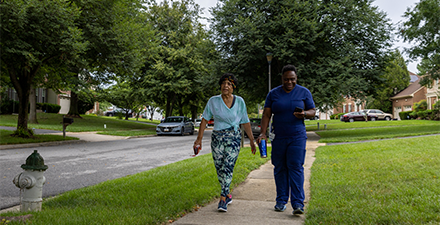APTA is proud to be named a National Youth Sports Strategy Champion by the U.S. Department of Health and Human Services, and is looking forward to contributing to the promotion of movement and exercise throughout life.
In acknowledgment of that designation and in recognition of May as National Physical Fitness and Sports Month, here are five recent research insights on sports and the pediatric population.
Recreational Soccer Training Effects on Pediatric Populations Physical Fitness and Health: A Systematic Review
From the study: "The main results revealed that recreational soccer training programs that are implemented twice a week could improve the generality of physical fitness parameters and beneficially impact cardiovascular health and biomarkers. Thus, recreational soccer meets the conditions for being included in the physical education curriculum as a good strategy for the benefit of the general health of children and young people." (Originally published in the journal Children)
Updated National Estimates of Disparities in Physical Activity and Sports Participation Experienced by Children and Adolescents With Disabilities: NSCH 2016-2017 (abstract only available for free)
From the study: "Children, but not adolescents, with disabilities had significantly lower odds of being sufficiently active compared with peers without disabilities … Across age groups, the lowest prevalence rates were observed among those experiencing function and mobility disabilities. Children and adolescents were significantly less likely to participate in sports compared with peers." (Originally published in the Journal of Physical Activity and Health)
Organized Sports Participation Among Children Aged 6-17 Years: United States, 2020
From the study: "In 2020, 54.1% of children aged 6-17 years participated in sports during the past 12 months. The higher the level of parents’ education, the more likely children and adolescents were to participate in sports. As family income increased, the more likely children and adolescents were to participate in sports. Children and adolescents in the South were less likely to participate in sports (48.7%) compared with all other regions of the country." (Originally published as a National Center for Health Statistics data brief)
Trends in sports participation in adolescents: Data from a large-scale sample in the US
From the study: "A declined overall trend could be observed in sports participation in adolescents, the prevalence of sport participation was 58.4% in 2011 and 57.4% in 2019. The declining trend was also observed in grades 10 (62.3% in 2011 and 57.9% in 2019) and 12 (52.5% in 2011 and 49.8% in 2019) adolescents, and an increase could be observed in grade 11 (56.2% in 2011 and 59.1% in 2019) adolescents, but few changes were found in grade 9 (61.4% in 2011 and 61.9% in 2019) adolescents. Only white adolescents reported an increasing prevalence of sports participation, slight declines in sports participation were observed in Black or African American, Hispanic/Latino, and other adolescents." (Originally published in Frontiers of Public Health)
Factors Predicting Physical Activity and Sports Participation in Adolescence
From the study: "We found a significant reduction in sports participation during early adolescence, most pronounced, from 8th to 10th grade (from 13 to 15 years). Factors which predicted physical activity after two years were a positive attitude towards physical education, perceived support from parents, if the student travelled to school in an active way (by walk or bicycle) and also how the student rated his/her own health. Health promotive efforts aiming at increasing active school transportation, parental support, and subjective health seem important for maintenance of physical activity and sports participation during adolescence. Attitudes may improve by adapting physical education to individual needs and interests and can function as an additional promotive factor." (Originally published in the Journal of Environmental Public Health)
